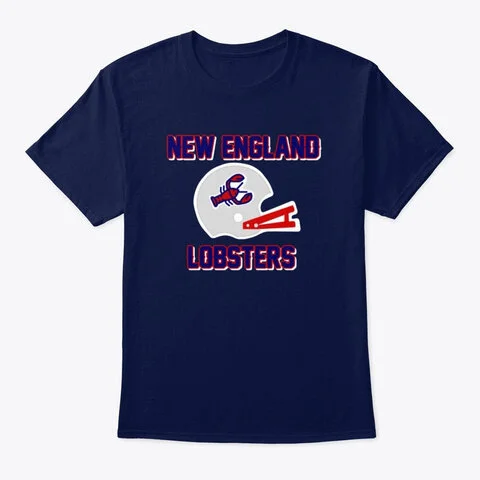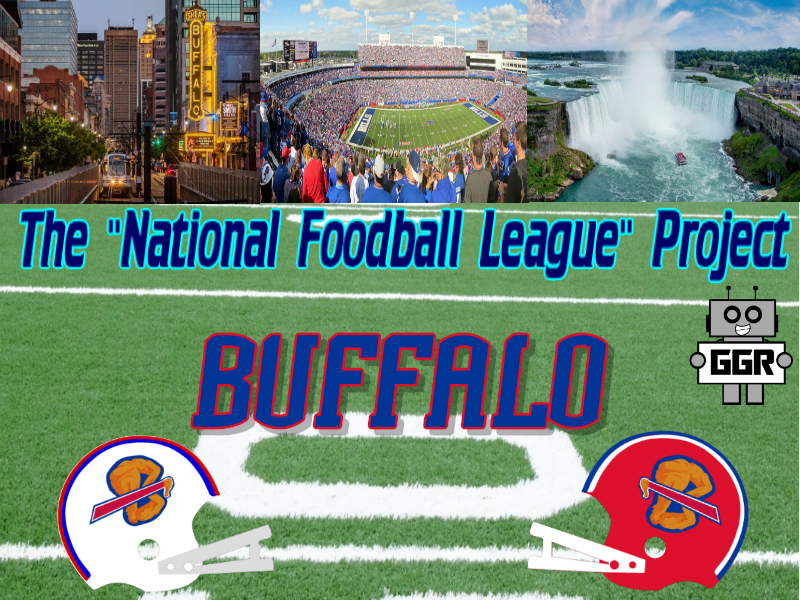"The National Foodball League" Project: Boston
by Mike “Wicked Pissah” Lunsford, GGR Editor-in-Chief
Hello friends, and welcome to another installment of “The National Foodball League” Project. It’s a multi-media project where I write an article about the city du jour, delving into its history, sometimes into the history of the football teams if it's necessary, its most iconic foods and then make a boss football team logo.
We continue our food/football journey up the East Coast to the capital of Massachussetts, Boston. Now, I know what you’re thinking: “but they’re not the Boston Patriots, they’re the NEW ENGLAND Patriots, your article should be about New England” Yes, the Patriots are named for the entire New England region, but Boston is the largest city in New England and the closest major city to Gillette Stadium. They were also originally named the Boston Patriots but couldn’t find a regular home in the city. It was the late 60s and at that point were the 4th most popular team in the area after the Red Sox, Celtics and Bruins. They had to do something to make a name for themselves, so instead of just appealing to the Bostonians and Massachussetts residents, they moved to Foxborough (about 25 miles outside of Boston), changed their name to New England to attract some fans from nearby Connecticut and Rhode Island. Plus, under-represented Vermont, New Hampshire and Maine now had a football team, too! The Patriots literally had to carve out an existence in a city that already had 3 legendary sports franchises and at this point, the team’s incredible 20 year run has resulted in 6 Super Bowl titles, 9 appearances and more wins than any other franchise in football. I think they proved they belong in the area, and Bostonians have embraced them as their team.
Boston is one of the oldest American cities. In 1630 Puritan settlers named the city after a port city in England. It quickly became a shipping locale and hub for the New England region and an important seat of American revolution, much like Philadelphia and New York. After American independence, Boston continued to thrive as a center for education and culture. Because of that cultural growth, it also has a famous culinary scene. This is a food blog after all, so let’s jump in there.
Boston gets nicknamed “Bean Town,” but do you know why? I mean…Boston Baked Beans, right? The short answer is yes. But I was quite surprised when I learned that a lot of people think that the only Boston Baked Beans are these little guys.
But there’s also ACTUAL beans, not just candy that looks like beans. In fact, baked beans have been a staple for the region since before Europeans made their way here. The Native Americans tribes of the area, the Algonquin, taught the early Puritan settlers their recipe. Over the years, it gained some additions to “spice it up.” The traditional recipe that is most well known is beans sweetened with molasses and flavored with salt pork or bacon.
One starts to think: how would colonists get their hands on molasses to sweeten their beans? That sort of thing doesn’t grow in Massachussetts. OH….Triangular Trade. Fun. The city had tons and tons of molasses to make rum and use in their recipes and such because of the slave trade. Look, I’m not going to bash Boston for the sins of the past, but I’m also not going to name a football team after a dish where one of the primary ingredients was acquired because of the slave trade. This whole project started because of Washington’s former racist name. So, that’s a no on the beans. NEXT DISH.
It’s got Boston in the name, so it seems only fair to at least give consideration to Boston Cream Pie. It was invented in the city in 1856 at the famous Parker House (now the Omni Parker House). It’s become so synonymous with the area, that it was named the state dessert. But here’s the rub: it’s not actually pie. Boston Cream “Pie” is pastry cream sandwiched between two golden cake layers and then covered in chocolate. It’s cake. It’s delicious, decadent cake but why call it pie? Because of that dumb naming issue, Boston Cream Pie is out of contention for the naming rights of the Boston area foodball team. Plus, calling a team the Cream Pies seems like a bad idea, regardless of how delicious the dessert is. Those reasons I choose not to speak of on this hallowed website. We got standards.
“Go Cream Pies!” No…that’s just wrong.
Much like their friends to the south Baltimore, Boston is a harbor city and has a long history with seafood. This seemed like the right place to dig to find the right food mascot. With the cold waters of the North Atlantic not far from the shores of Boston, this makes the area famous for seafood such as lobster and clams. We’ll start with everyone’s favorite food of decadence: lobster.
“Say hi to your mother for me.”
Did you know that lobster was not always considered a delicacy? It was only within the last hundred years or so that it became the symbol of decadence and fine dining. In American and Canadian culture during the 17th and 18th century it was looked at as poor people food. Lobsters were used more for fish bait than actual eating, being fed to prisoners and “the help.” It wasn’t until the late 19th century and into the 20th century when New Yorkers and Bostonians developed a taste for the bottom-dwelling crustacean and techniques were developed to cultivate the tasty little ocean cockroach. It’s a symbol for the region, with Maine being the most famous area of New England associated with lobsters. In fact, lobsters are so associated with the area, I first thought “New England Lobsters would work.” So, here’s the initial concept for that logo.
by the way, the lobster’s name is Pinchy. Just so you know.
I liked it, but it didn’t scream New England to me. It was close though. Let’s talk about the other crustacean associated with the area: clams.
Clams have an important role in the area, too. Their role is a bit more cultural and social, similar to crab picking in the Chesapeake region. New Englanders love a good clam bake. Its a social event, on a beach somewhere with clams, lobsters, corn on the cob, potatoes and smoked sausage cooked together in a fire pit.
Now, the clams themself are important but there’s a recipe that is integral to this region and actually named after it. That’s New England Clam Chowder. There are many variations of clam chowder, but it is universally recognized that the cream-based concoction of shellfish, salt pork or bacon, and potatoes is the king. Also, the New England variant was the first.
Not only is the dish named for the area, it has a pronunciation that is unique to the region which was taken into consideration when coming up with the name. And, unlike Boston Cream Pie, it doesn’t make one think of inappropriate references. I give you the representative for the New England region, based out of Boston for the National Foodball League: The New England Chowda!
I personally like the retro look myself, it pops a little more than the silver look. You can chose either as they are available as tee-shirts! Click on the picture below to get one today! Or…
For the first time in the National Foodball League, we have hoodies! It comes in grey, blue or red!
New England is as far north on the East Coast when it comes to football teams. We’ll be traveling west towards the New York/Canadian border for our next franchise, so stay tuned!

























Mike returns to the “Foodball League Project” with an entry about the Steel City of Pittsburgh.